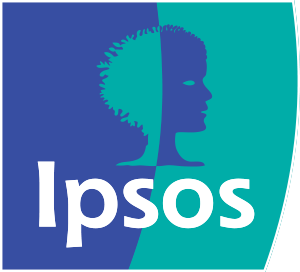Author: Katherine Page

The popular phrase ‘future proof’ is appealing, but the idea that online audience measurement systems can be somehow ‘proofed’ against market disruption is wrong. Far better to learn with the future, as Katherine Page argues with the imminent launch of Ipsos iris in mind.
It is a major event when an audience measurement system changes both methodology and contractor. UKOM’s new research supplier, Ipsos iris, is now in its final stages of set-up and we await first sight of the culmination of several years of consultation, design and implementation.
Like any such development, it is an involved process. UKOM’s initial consultations with stakeholders and the industry began in 2018, with a tender process starting in January 2019 and the appointment of Ipsos as the future UKOM supplier in January 2020.
Since then no fewer than nine committees with over 60 people from across the industry fed into its design, covering everything from taxonomy to GDPR to advanced audiences and ad campaign measurement.
Naturally there are conflicts and opinions but the opportunity and forum to have that debate was hugely valuable, particularly when designing a measurement that takes into account the UK market’s specific needs.
Working together works
More broadly, opportunities for collaboration have become a focus for developments in audience measurement throughout Europe, with increasing recognition of the need for joined-up thinking.
Look at the TMAM project in the Netherlands: it keeps the specific measurement requirements of different media and platforms in the context of a unified vision and framework for data collection.
This is no mean feat, particularly when it comes to governance, and so the long gestation. But the potential benefits of a system set up to enable cross-media insights and data integration, as well as efficiencies, are obvious.
A key feature of the new systems is that they help integration with external data, a big step forward from some of the more clunky solutions necessary for heritage currencies. This was front-of-mind when PAMCo replaced NRS as the source of audience estimates for the published media.
PAMCo publishes integrated print and digital audience estimates sourced from the current UKOM supplier Comscore and will integrate estimates from Ipsos iris from 2021 onwards. As Ipsos iris has data integration as a requirement, this enhances the fusion with PAMCo and level of control possible. It also, of course, helps other data integrations.
Flexibility is key to being future-ready
Being set-up for data integration is one aspect of being ‘future-ready’. I very much prefer this term to the much requested but frankly unrealistic ‘future-proof’. If we needed a lesson in the impossibility of being future-proof: Covid-19. Readiness to adapt to new developments across the lifetime of a contract is now a given.
A key area of interest in this respect for not just UKOM but many other audience measurement currencies around the world is how the execution of the WFA cross-media initiative evolves.
As Project Origin announces its planned pilots for 2021, the recent 2020 asi Virtual Conference hosted an important session airing some of these issues around the audience measurement ecosystem – and the scope for both collaboration and disruption.
The session on cross-media measurement was a reminder about getting the fundamentals of audience measurement right.
In particular, a representative overview of people’s behaviour remains critical to reliable audience measurement. Given the sophistication and complexity of the data and modelling likely to be used, a sound foundation is more important than ever.
For UKOM, Ipsos iris is building a single-source multi-device panel of 10,000 participants, and around 25,000 devices, expanding out from the BBC Compass panel. The quality of the eventual dataset depends on the quality of this panel. For UKOM and other measurement systems this is not only about having a panel as a ‘source of truth’ for hybrid measurement, but how representative that panel is of the universe it covers. And, in particular, there needs to be the ability to observe reliably duplication in media consumption across platforms, devices and content providers.
This is an extraordinary time for audience measurement, post pandemic. The set-up of Ipsos iris has been relatively unaffected by the immediate challenges of COVID-19, unlike those audience measurements that rely on at least some face-to-face interviewing such as PAMCo, Route, RAJAR and BARB.
But, more broadly, as the asi event demonstrated, COVID-19 has underlined the need for flexibility and adaptability. Measurement bodies and research companies are evolving their approaches – and decision-making processes – at an unprecedented speed. The challenges of COVID-19 will recede as vaccines materialise, but the momentum for change in audience measurement looks set to continue.
Katherine Page is a freelance consultant specialising in media audience measurement

